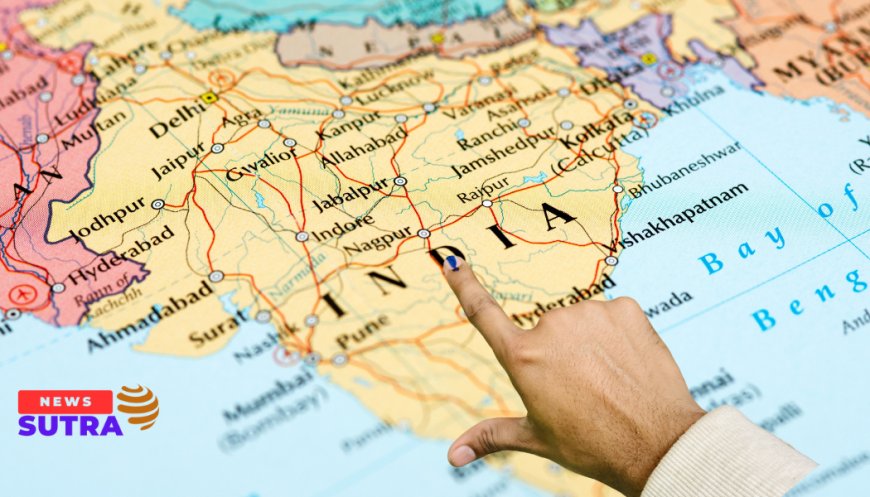One Nation, One Election: A Vision Deferred or a Reform in Waiting?
As NDA begins its third term, the controversial 'One Nation, One Election' proposal resurfaces in political discourse. Will it finally materialize, or remain a constitutional challenge? Here's a deep dive into its feasibility and implications.

With the National Democratic Alliance (NDA) returning to power in its third term, one of the most talked-about political reform proposals—One Nation, One Election (ONOE)—is once again stirring debate. Initially floated by Prime Minister Narendra Modi during his first term, the idea proposes simultaneous elections to the Lok Sabha and all state assemblies, aiming to streamline governance and reduce election costs.
But after nearly a decade of deliberation, ONOE remains on paper. So the question remains: Is One Nation, One Election still on the agenda under NDA 3.0? Or has it lost political momentum amid coalition dynamics and constitutional complexity?
What is ‘One Nation, One Election’?
The concept of One Nation, One Election is rooted in the synchronization of the electoral calendar across India. It suggests that all elections—both parliamentary and state legislative assemblies—should be held simultaneously every five years.
This was, in fact, the norm during India’s first two decades of democracy (1951–1967), before political instability led to the breakdown of synchronized election cycles.
For a comprehensive primer, visit the Law Commission of India’s 2018 Draft Report on Simultaneous Elections.
Why the NDA is Reviving the Proposal
The BJP-led NDA has long championed the idea, citing benefits such as:
-
Reduction in election expenses
-
More focused governance without the interruption of election codes of conduct
-
Improved voter turnout by increasing engagement through a single nationwide campaign
During his campaign speeches, PM Modi reiterated the need for electoral reforms, and insiders suggest that ONOE is very much alive within the policy circles. However, the coalition nature of NDA 3.0 may complicate constitutional amendments, which require a two-thirds majority in Parliament and ratification by at least half of the states.
A breakdown of the constitutional challenges is available via PRS Legislative Research – Constitutional Amendments for ONOE.
The Legal and Logistical Hurdles
Implementing ONOE is far from straightforward. Key hurdles include:
-
Amendments to at least five articles of the Constitution (Articles 83, 85, 172, 174, and 356)
-
Need for consensus among states, many of which are ruled by opposition parties
-
Managing mid-term dissolutions of state assemblies or Lok Sabha
-
Election Commission of India (ECI) would require massive logistical upgrades in staff, security, and equipment
Even the Standing Committee on Personnel, Public Grievances, Law and Justice acknowledged in its 2015 report that the idea was worth pursuing, but “not without constitutional, political, and administrative challenges.” Read the full report here.
What the Opposition is Saying
Most opposition parties have expressed concern or outright opposition to ONOE. Their arguments include:
-
Federalism at risk: Centralizing election cycles could undermine state autonomy
-
Local issues sidelined: National narratives may overshadow state-specific governance concerns
-
Hidden agenda: Critics view ONOE as a strategy for centralized political dominance
Congress leader Jairam Ramesh called the proposal “undemocratic and impractical” in a statement released last year. DMK, TMC, and Left parties have also voiced strong resistance.
Is There a Middle Path?
Some constitutional experts and policy think tanks have suggested phased elections as a possible compromise. This would involve clubbing state elections within a two-year window rather than synchronizing everything simultaneously.
This compromise would:
-
Ease the transition into ONOE
-
Allow time for administrative and legal frameworks to adapt
-
Reduce the frequency of elections without undermining state-level representation
For further academic insights, see the Observer Research Foundation (ORF) publication on ONOE Alternatives.
The Verdict Under NDA 3.0: Still on the Agenda?
Despite political headwinds, ONOE is unlikely to vanish from the reform agenda. What’s changed under NDA 3.0, however, is the urgency and feasibility:
-
The BJP does not have the brute majority to pass constitutional changes unilaterally
-
Coalition partners like TDP and JD(U) have not publicly endorsed ONOE
-
Public sentiment remains divided, with rural areas more in favor and urban voters expressing skepticism
According to a CSDS-Lokniti Survey, support for simultaneous elections stood at 56% nationally, but dropped in states with strong regional parties.
Conclusion: A Political Idea in Limbo
One Nation, One Election remains a bold and transformational idea—but for now, it's more vision than policy. While the NDA may continue to push for it, the practical and constitutional challenges require broad-based consensus, something increasingly rare in today's fragmented political landscape.
Unless a national political agreement emerges, ONOE may remain in the realm of white papers and committee reports—not ballots and booths.



















































